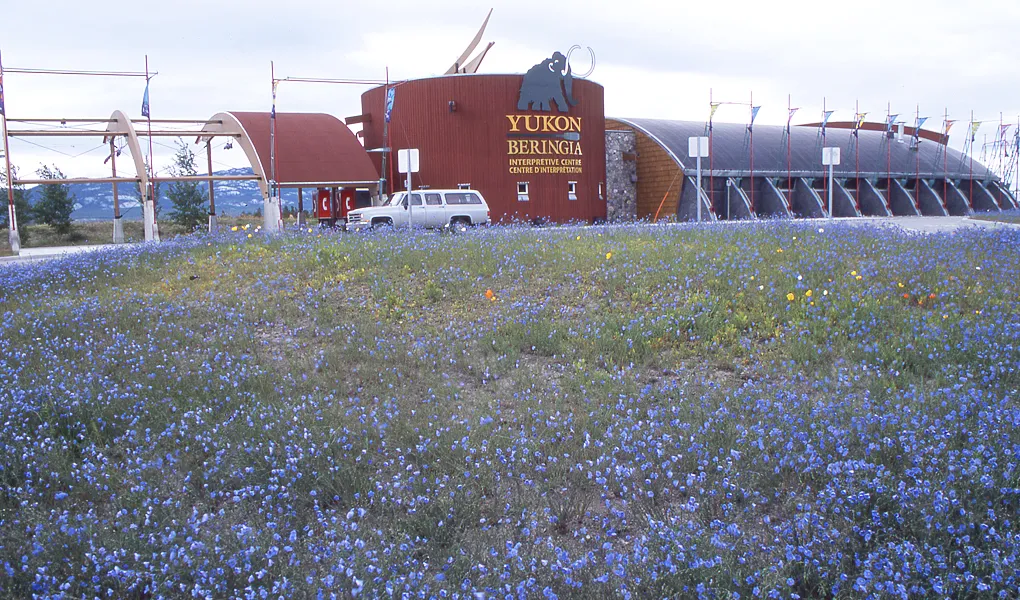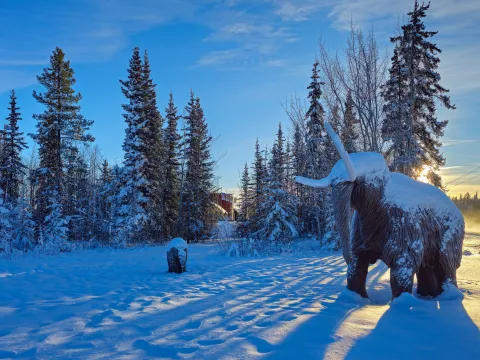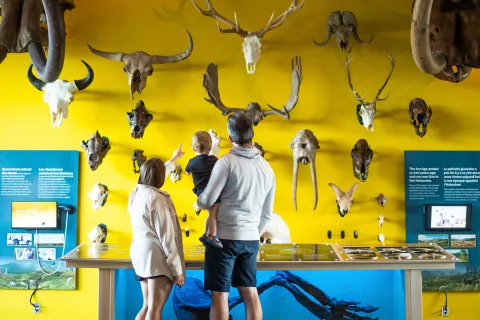- Log in to post comments
February 7, 2014
Ancient plant DNA reveals 50,000 years of the Beringian Landscape
Researchers working in Beringia have long grappled with the question of how a community of woolly mammoths, steppe bison and other large mammals could survive the frigid, harsh ice age conditions in the Arctic. Central to this question are studies that aim to reconstruct the types of plant communities that were available as forage for these animals.
A new study published in the February 6th issue of the journal Nature has called into question the well-established image of Beringia covered in expansive grassland vegetation known as the Mammoth-Steppe. Instead, this new research might force us to erase the picture of mammoths feasting on big bunches of grass, but rather we should think of them as foraging more on small flowering plants—what scientists call forbs.
Reconstructions of Beringia’s vegetation have long been a topic of debate. Most previous work in Beringian palaeoecology – or the study of ancient ecosystems - has relied on the analysis of fossil pollen extracted from cores of lake bottom sediments. Results of these pollen-based studies from across Siberia, Alaska and Yukon suggested that ice age Beringia was a sparsely vegetated landscape, similar to high arctic or high altitude tundra, with few plants and much barren ground. This reconstruction did not sit well with vertebrate palaeontologists because it was in stark contrast to the evidence for abundant and diverse herbivores revealed by the rich record of ice age bones. In more recent years, the analysis of plant macrofossils – things like seeds and leaves – found in the permafrost have provided a much more detailed view of the ice age vegetation that is more in line with the theory of a highly productive grassland.
The new study lead by Eske Willerslev from the University of Copenhagen and his large team of international scientists, took a much different approach than previous palaeoecological studies. Instead, these researchers examined ancient plant DNA preserved in permafrost soils from across the Arctic. The examination of DNA from soil is a relatively new way to analyse past vegetation, but is considered a reliable source of evidence for local plant communities. The DNA comes from decomposed roots and above-ground plant biomass, as well as from faeces of animals, which are incorporated into the soil. In addition, the research team analyzed DNA from plants preserved within stomach contents of Beringian mammals, including the ice age Yukon horse that was found by placer miners at Last Chance Creek.
All together, the study examined plant DNA from 242 sediment samples taken from 21 sites, including several from the Klondike goldfields of central Yukon. The sediment samples were divided into 3 time periods using radiocarbon dating: 1) Pre LGM (Last Glacial Maximum), 50,000 to 25,000 ya (years ago); 2) LGM, 25,000 to 15,000 ya; 3) Post-LGM, 15,000 to present. The three time periods were compared in order to reveal the overall pattern of vegetation changes over the last 50,000 years.
In contrast to the established model of Beringia being home to rich grasslands, the results of this new study indicate that there was actually relatively little grass here during the ice age. Rather, Beringia before and during the Last Glacial Maximum was largely covered in a wide diversity of forbs, or small flowering plants. The study also indicated that overall plant diversity was at its minimum during the Last Glacial Maximum which is to be expected given this was the coldest and driest part of the Pleistocene. Regional vegetation composition changed abruptly after 15,000 years ago reflecting moister and warmer conditions at the end of the ice age with establishment of woody shrubs and tundra.
All together, these new results suggest to the researchers that the large mammals of Beringia supplemented their diets with an abundance of high-protein forbs rather than specializing more or less exclusively on grasses. This raises questions about the validity of labelling the ancient Beringian landscape the “Mammoth Steppe”. If the ice age grasslands or steppe were actually more like fields of poppies, anemones and sage, scientists might have to come up with a better term to describe this ancient environment. Like all good science, new information always leads to new questions.
Grant Zazula, the Government of Yukon Palaeontologist and co-author of the study says “These new ancient DNA data will certainly alter the way we envision ice age environments of Beringia. But like many types of palaeoecological information, this study may not present the complete and final view of the mammoth steppe. This paper will hopefully lead to additional research which can help develop even more robust pictures of ancient plant communities and environmental changes in the Arctic.”
The research presented by Willerslev and his colleagues represents the most systematic and geographically extensive project ever to use ancient DNA in the reconstruction of ancient vegetation. The team included scientists from across Europe, Asia, Australia and North America with a common interest in ice age environments. The permafrost sediments exposed at placer gold mines in the Yukon were instrumental for this research and continue to provide important new information about Beringia.
Reference: Fifty thousand years of Arctic vegetation and megafaunal diet. Willerslev E, et al. 2014. Nature, 506: 47-51.




